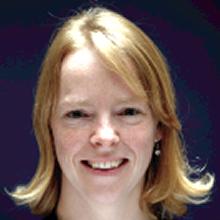Modelling lowland peatlands and carbon dynamics: A comparison of the Somerset Levels and New Forest
Fully funded NERC studentship
Supervisors: Prof. Tony Brown and Dr. Paul Hughes
The evolution and degradation of peatlands is believed to be an important element in terrestrial carbon budgets and green-house-gas (GHG) emissions. This project addresses the practical environmental question of how the management of peatlands can be used to convert them lowlands from C sources to C sinks. In order to achieve this there remain, however, many critical questions; will restoration of the hydrology of lowland peatlands deliver net GHG benefits, and what is the effect on methane and other GHG emissions of peat wastage/drainage, extraction and rewetting? In order to answer these questions it is necessary to have reliable information on the distribution, nature and condition of lowland peatlands. Indeed this now is a requirement for UK Local Authorities under guidance from Central Government and must figure in future Minerals and Waste Policy statements.
In the past such information has been obtained using soil surveys, however, in many areas far better information exists from peat-depth and stratigraphic surveys undertaken for other purposes (e.g. peat extraction, Quaternary science and archaeology). This project will model two contrasting areas of lowland peat, one deep and alluvial/ombrotrophic (Somerset Levels), and the other dispersed and groundwater fed (New Forest) using a GIS+LiDAR framework. Existing spatial and analytical data will be augmented where required by field survey and core characterisation (bulk density, total organic carbon etc.). This model can then be used as the source for a carbon budget model incorporating factors such as peat wastage, land-use C budgets (both CO2 and CH4), land-use management, and critically management of the C budget through water-table management. The model will also be used to assess the impact of future climate change by coupling with the community models (eg. JULES) and the Met Office’s climate change model (MOSES), which at present do not incorporate multiple soil layers (i.e. stratigraphy). The project builds upon work undertaken at Southampton on peat wastage and the carbon budget of the Somerset levels, and several decades of research in the New Forest. It is a collaborative project with Somerset County Council, the British Geological Survey and New Forest National Park Authority. The ultimate aim of the project is to provide science that is robust enough to be used to encourage ‘sustainable’ land management practices, particularly through appropriate water level and land-use management.
Notes:
The closing date for applications is 1 April 2011.
Eligibility for this studentship is governed by the NERC – please see their
website
to check your eligibility BEFORE making an application:
For information on how to apply, follow these links or contact Julie Drewitt, Graduate School Administrator on j.a.drewitt@southampton.ac.uk if you have any further queries.
What's related
Other University of Southampton sites
Related Staff Member
Links to external websites
The University cannot accept responsibility for external websites.
